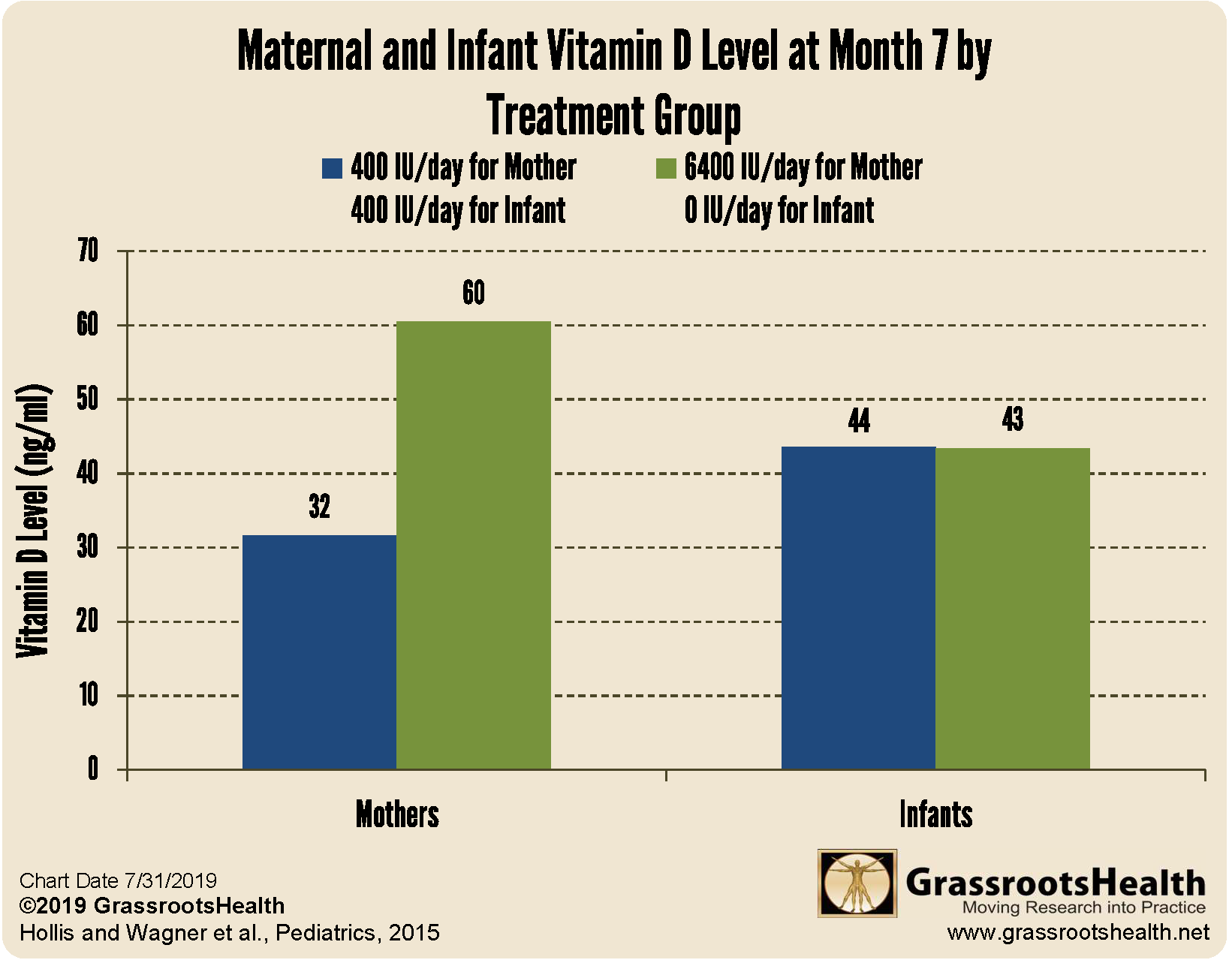Published on August 1, 2019
 August is National Breastfeeding Month and the first week of August is World Breastfeeding Week. Breast milk is considered the best source of nutrition for infants except for its lack of vitamin D. This is why the American Academy of Pediatrics and the Institute of Medicine recommends supplementing breastfeeding infants. However, this is not due to an inherent defect in breast milk but rather to insufficient vitamin D intake in the mother. In this blog, we will highlight two clinical trials of vitamin D supplementation, both showing that maternal vitamin D supplementation of 6000+ IU/day provided adequate vitamin D levels in breast milk.
August is National Breastfeeding Month and the first week of August is World Breastfeeding Week. Breast milk is considered the best source of nutrition for infants except for its lack of vitamin D. This is why the American Academy of Pediatrics and the Institute of Medicine recommends supplementing breastfeeding infants. However, this is not due to an inherent defect in breast milk but rather to insufficient vitamin D intake in the mother. In this blog, we will highlight two clinical trials of vitamin D supplementation, both showing that maternal vitamin D supplementation of 6000+ IU/day provided adequate vitamin D levels in breast milk.
Clinical Trial #1:
In 2015, Drs. Bruce Hollis and Carol Wagner, two scientists from our GrassrootsHealth panel of vitamin D experts, published results from a clinical trial comparing 334 exclusively breastfeeding women in the United States assigned to either 400 or 6400 IU/day of vitamin D for 6 months. Infants in the 400 IU group received oral vitamin D supplementation of 400 IU/day and infants in the 6400 IU group received no supplemental vitamin D. At the start of the trial, the average vitamin D level was 33 ng/ml in the 400 IU group and 36 ng/ml in the 6400 IU group. After 7 months, women in the 6400 IU group safely and significantly increased their vitamin D levels compared to women in the 400 IU group (60 vs. 32 ng/ml, P<0.0001) and their infants achieved a vitamin D level similar to infants receiving 400 IU/day (43 vs. 44 ng/ml).
Clinical Trial #2:
Last month (July 2019), a similarly designed clinical trial among women in Qatar found similar results. In this trial, participants were assigned to either 6000 IU/day of vitamin D for the mother alone (infant received no supplementation) or 600 IU/day for the mother and 400 IU/day for the breastfeeding infant. At the start of the trial, the average vitamin D levels in both groups was approximately 14 ng/ml. After 6 months, women in the 6000 IU group achieved an average vitamin D level of 39 ng/ml compared to 21 ng/ml for women in the 600 IU group (P<0.0001). While the achieved level in the high-dose group was lower in this trial compared to the one above, the increase from baseline was similar. Infants receiving 400 IU/day achieved higher levels than infants of only supplemented mothers (44 vs. 37 ng/ml, P=0.03), however a similar percentage achieved levels at or above 20 ng/ml (91% vs. 89%).
These clinical trials show that with adequate vitamin D supplementation (6000+ IU/day), a mother can provide enough vitamin D to her infant through her breast milk so that additional supplementation for the infant is not required. Simplifying supplementation to just the mother may be a more effective method of reducing vitamin D deficiency than supplementing both the mother and infant.
Are you getting enough vitamin D?
 Testing your vitamin D level regularly and taking daily steps to keep it at a target level of 40-60 ng/ml (100-150 nmol/L) is important for all stages of health. Find out your levels today! Log on to the shop to get your tests and see for yourself if your level can be improved.
Testing your vitamin D level regularly and taking daily steps to keep it at a target level of 40-60 ng/ml (100-150 nmol/L) is important for all stages of health. Find out your levels today! Log on to the shop to get your tests and see for yourself if your level can be improved.
Make sure you track your results before and after, about every 6 months!
How can I track my vitamin D intake and levels over time?
To help you track your supplement use and nutrient levels, GrassrootsHealth has created an online tracking system called myData-myAnswers. For each specific supplement, you can track what days you take it, how much, and many other details. This will help you know your true supplemental intake and what patterns of use work for you to reach and maintain optimum nutrient levels. Check it out today!







